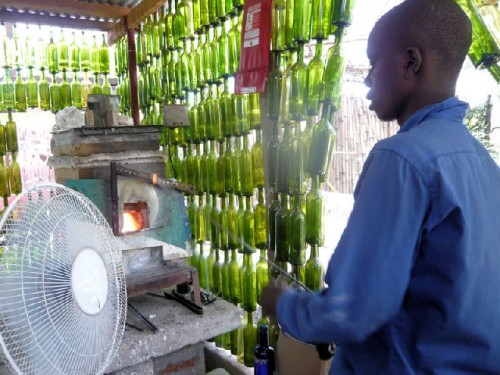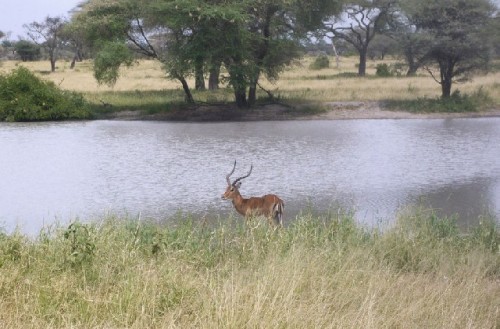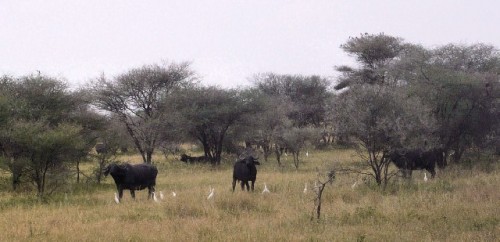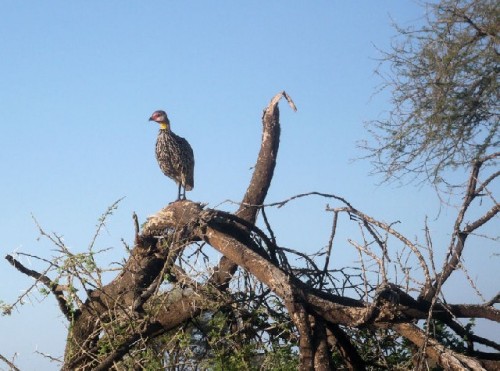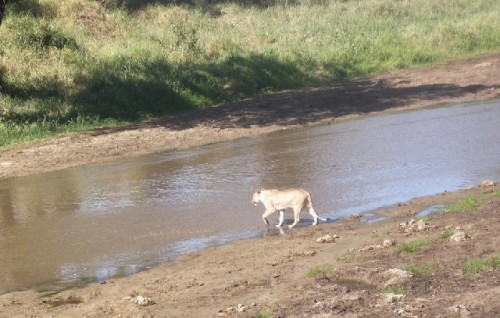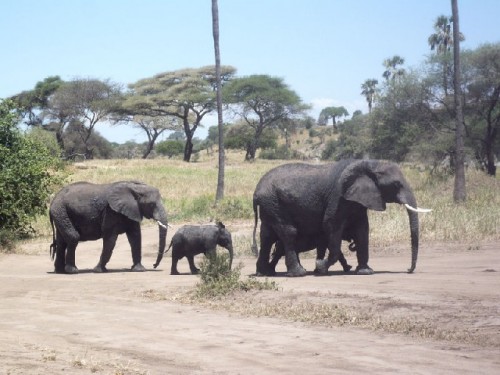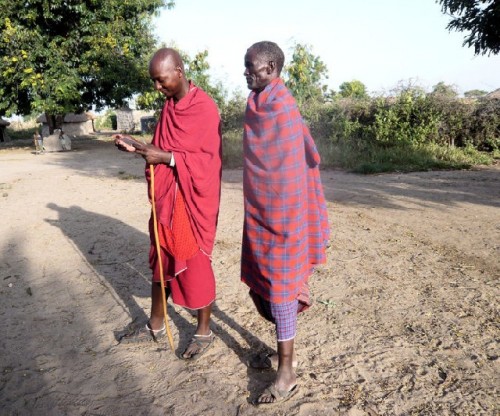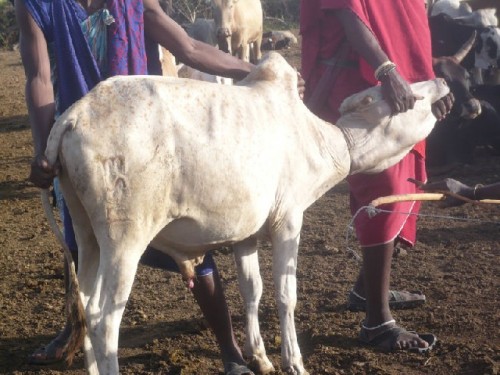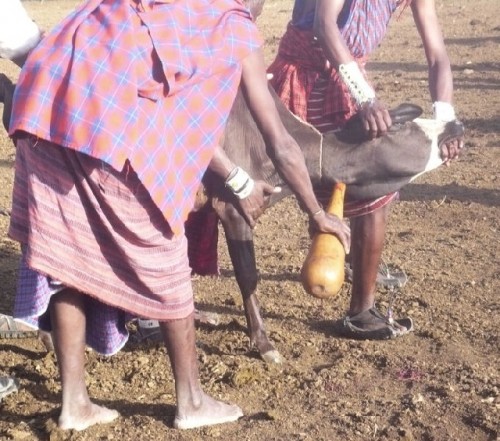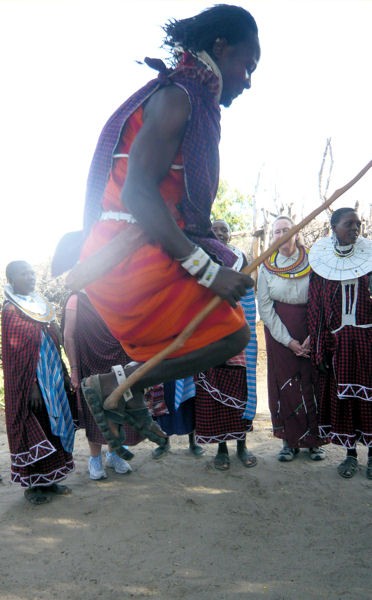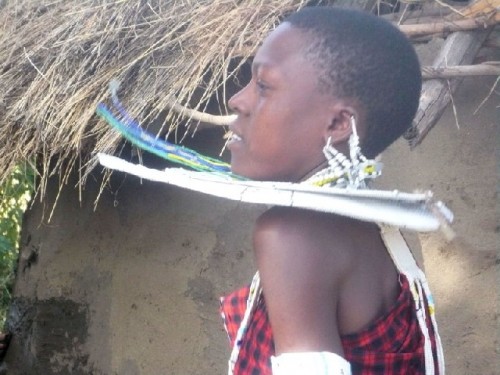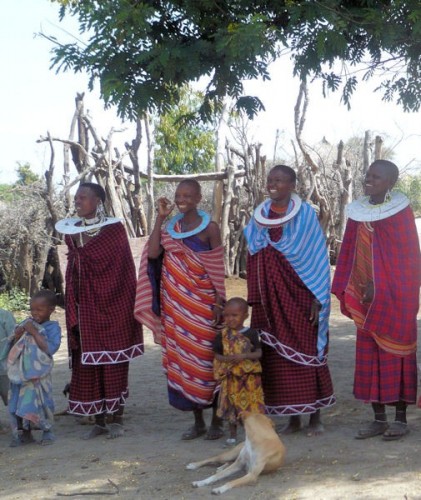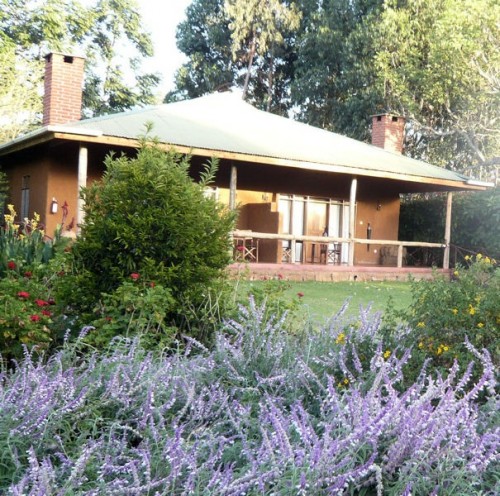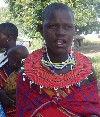Tanzania: Part Two
Arusha and Tarangire National Park
By: Zeren Earls - Mar 16, 2012
Our group grew to fourteen with the addition of six people. After a briefing by Ridas, we left the lush grounds of our lodge and dove into the congestion beyond its ten-foot-high walls. Although Tanzania mines diamonds, gold, and tanzanite, and has resources such as tin, iron ore, coal, and natural gas, its wealth has had little impact on the lives of the 35 million people of the Republic. In places like Arusha the majority live without electricity or plumbing, in tin-and-wattle structures pieced together from found materials. Dodoma is the capital city, 500 km west of Dar es-Salaam, the commercial center.
The day’s excursion began with a visit to the Burka Coffee Estate near Arusha. The estate, the largest in Tanzania, is owned and managed by German and Swiss businessmen, providing monthly salaried jobs and benefits for 300 local workers, with an additional 3000 seasonal jobs for picking. Coffee plants start out as seedlings in a protected environment with proper water and shade. They are planted outdoors upon reaching three feet and are pruned regularly to manage their height. The beans are hand-picked when they turn red, and taken to the processing plant. Originally from Ethiopia, Arabica coffee grows in several varieties at high altitudes; Robust, a single-variety coffee, grows in the lowlands.
A visit to the Shanga River House on the Burka Estate introduced us to Tanzanian crafts, food, and coffee. This craft center, founded by a Dutch woman, trains people with disabilities and provides them with paid employment along with a chance to fulfill their creative potential. Following a greeting in sign language, we toured the various workshops and learned about the different processes for making glass beads. In one method, broken multicolored pieces of glass are placed in molds and fired in a kiln, producing round beads, which are then combined with fabric to make necklaces. In the other method, “Murano,” molten glass is pulled out with a long metal tool in a spinning motion to form the bead. Glass beads permeated the Shanga House, from patio tiles to chandeliers.
Visiting the gift shop was a treat. We were introduced to local fabrics and beaded works. My resolve not to collect any more crafts fell by the wayside. I bought two necklaces; one with glass beads alternating with beads covered in printed fabric, the other of beaded wire fashioned into circular shapes. My additional purchases were placemats and coasters made using the same technique as the wire necklace, and a wooden picture frame inspired by zebra stripes.
After this shopping spree, Ridas invited us to the patio for a taste of plantation coffee, which arrived accompanied by a surprise birthday cake. In honor of two members of the group, including myself, who had birthdays during the trip, the cake had been prepared in the Shanga House restaurant. Although my birthday was five days away, I was delighted at this early mini-party, as Ridas felt it would have been difficult to replicate this cake while camping in the Serengeti on my actual birthday. Both the cake and the coffee were delicious.
A cooking demonstration, followed by a lunch of traditional Tanzanian specialties, was memorable. The menu was the chef’s choice of dishes from several tribes — banana and vegetable stew, chicken in coconut sauce, beans, spinach, and pilaf seasoned with seven spices from Zanzibar. A salad of tomatoes, onions, green pepper, and cucumber with mild chili pepper, as well as polenta, accompanied the dishes. In parting, the chef gave us a book with these recipes.
Packing a picnic lunch at the Olasiti Lodge in the morning, we departed for Tarangire, Tanzania’s third-largest national park, with diverse wildlife in nine different vegetation zones — part of Tanzania’s protected land area, which covers more than 25% of the country. Traveling southwest, we stopped just outside the park to enjoy our boxed lunches with a panoramic view. A variety of beautiful birds landed around us to catch bread crumbs, despite a sign saying not to feed them. Given the opportunity, I never bypass a gift shop, not to miss out on a unique find. This time it was a black-checkered bright red Masai shuka, which will come in handy to wrap up in on cold winter nights.
Before heading to our camp, we embarked on a game-viewing drive inside the park. During the course of the afternoon we saw male impalas with beautiful horns, Thompson gazelles with black-striped white rears, cape buffalo with egrets hovering around in search of insects startled out of hiding by the animal’s heavy tread, elephants solo or in herds, a family of warthogs, olive baboons (as opposed to yellow ones), eagles, and even our first sighting of a lion watching a giraffe from a distance; all within a landscape filled with a symphony of bird sounds.
Exiting the southern side of the park, we headed to the Lake Burunge Tented Camp, our home for the next two nights. Although in the midst of the wilderness, the camp featured solar energy, which also powered a heated shower. My spacious walk-in safari tent under a thatched roof had a spectacular view of Tarangire. A sunset viewed from the lodge was another reminder of the grandeur of the African sky.
Early the next day we set out to explore the park in a different direction than the day before. Our driver-guides could not promise what we might see in the bush; however, their eagle eyes never disappointed us. They could spot an animal far away, even without the aid of binoculars. On the ground or perched on trees was a wealth of birds, such as red-beaked hornbill, yellow-necked spur fowl, and kori bustard. We were fortunate to see a lion close up, as we waited patiently and quietly for her to approach our jeep. Enjoying the shade provided by the jeep, she surveyed the surroundings. She must not have been hungry enough to dart off after an animal; instead she walked away, heading toward the river, and disappeared after crossing the shallow waters.
Our afternoon nature walk was canceled due to an incident in the wild. Instead, we made a visit to a Mbugwe family, arranged through a camp staff member of the same tribe. Though non-nomadic and monogamous, the Mbugwe are similar to the Masai in terms of adornment and primitive lifestyle. Both husband and wife had stretched earlobes. He was wrapped in a green-checkered shuka; specially for us, she had on her bridal dress, made of goatskin pounded into fine leather and fringed along the skirt, which was decorated with beadwork. The dwellings were of wattle with thatched roofs. A string of calabashes hung on the outside for drinking.
The next morning’s experience was a day in the life of a Masai village, where we witnessed some long-standing Masai traditions. We were met by the chief of the boma, along with his brother, wives, and many children. Karibu (“welcome”), said all with convincing smiles. The first activity of the day was opening the bloodstream of a cow by shooting an arrow to the jugular vein. Two herders held down a healthy-looking cow while the chief shot the arrow, unfortunately missing the target. The wound was quickly sealed with mud and saliva, and the cow replaced. This time the arrow hit the target; blood poured out into a calabash used to collect and drink it. Although we declined to share this “delicious” morning drink, we were amazed at the natives’ ingenuity in acquiring protein from their cattle in a sustainable way.
In our honor, ceremonial dances were performed by two lines of men and women facing each other. Using a tall stick as a springboard, men took turns out jumping one another to impress the women, who reciprocated by hopping up and down in small steps, their ornaments swinging with them as they approached the men. The only sound accompaniment was the dancers’ own voices. Children, all adorned, joined in the merriment along with the spectators. Everyone had a great time.
The day’s work continued with men tending to cattle in the corrals and taking them to pasture. The herders know each cow by its looks, as well as by the sound of its wooden bells, and whistle to direct them. Meanwhile, some women covered thatched roofs with hay; others plastered huts built from acacia branches with a mixture of mud and cow dung.
Our visit included time with the chief’s five wives in one of the huts. During the introduction I mentioned I was a widow, receiving saddened looks in return, as no woman is alone in a Masai boma. Driven by courage and strength based on tradition, these people are content. They have adapted their lifestyle to the harshness of their homeland — a dusty, waterless, vast, wild landscape. They waved goodbye to us as we departed for the Ngorongoro Highlands, our next destination.
On the way we stopped in Makonde, a woodcarvers’ village. In a workshop we watched young men carve and chisel animals and bowls of various sizes out of blocks of wood, including ebony. I bought a beautifully carved giraffe, hoping it would fit in my duffel bag. Luckily, it did.
The Karatu Tloma Mountain Lodge, with its rolling lawns, flower gardens, and viewing verandah at 1600 meters above sea level, was a spectacular spot to recuperate overnight. Following a briefing the next morning, we left for our much-anticipated big adventure to the Serengeti and the Ngorongoro Crater.
Part One


